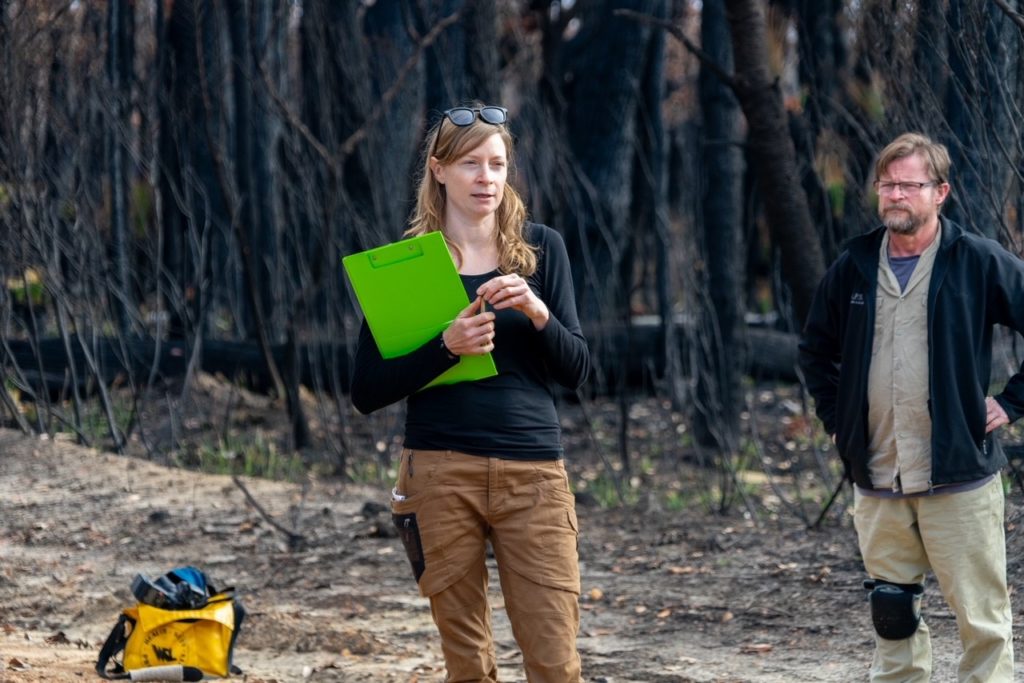A sense of belonging on Frankland riverbank
November 2024
PRUE ANDERSON has a life-long love for the Frankland – a river that flows into the Walpole-Nornalup Inlet on the south coast. She has studied, travelled and worked elsewhere, but always visited home to stay connected. Prue is now back at the Frankland River, running the family’s Che Sara Sara Chalets and exploring more of the watery, forested and peaty landscapes that are so precious to her. Prue is working to protect the natural places she lives amongst and loves.
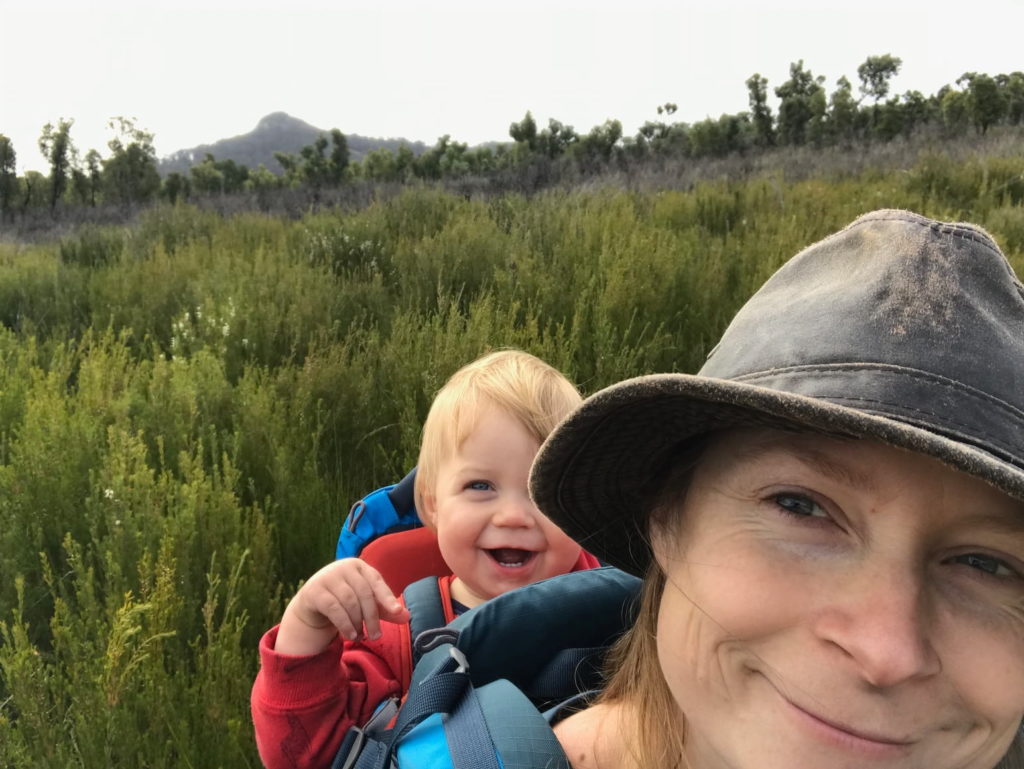
Gondwana Link: You live and work beside a river, amongst rolling, forested hills. What else describes this place?
Prue: It’s on roughly two kilometres of the Frankland River, upstream from Circular Pool and Nornalup. When there’s no wind and a big swell, a special thing about this property is hearing the sound of the ocean coming up the valley, coming up the river.
It’s an original Hazelvale Group Settlement block from 1927, so it was cleared and farmed, but now it’s mostly regrowth forest. About half is karri, but there are some really big mature trees out there. There’s a lot of yellow tingle, sheoak, jarrah, marri and blackbutt, and some heath. The natural drainage lines that run through it are great habitat for quokka.
Mum and Dad discovered this 72-hectare property in 1978 when Dad was the relieving Principal at Walpole Primary School. They bought it in 1979 and for the next eight years we spent most holidays here, camped down by the river. Over those years, Dad taught at many primary schools throughout the state, and after his last posting at Narrogin, where I was born, the family moved back to Walpole. We lived in a caravan and shed on the property while the house was built. Most of our meals were cooked on the campfire and the river was our backyard. I was almost two when we moved into the house, so my two older sisters and I were little bush kids before that.
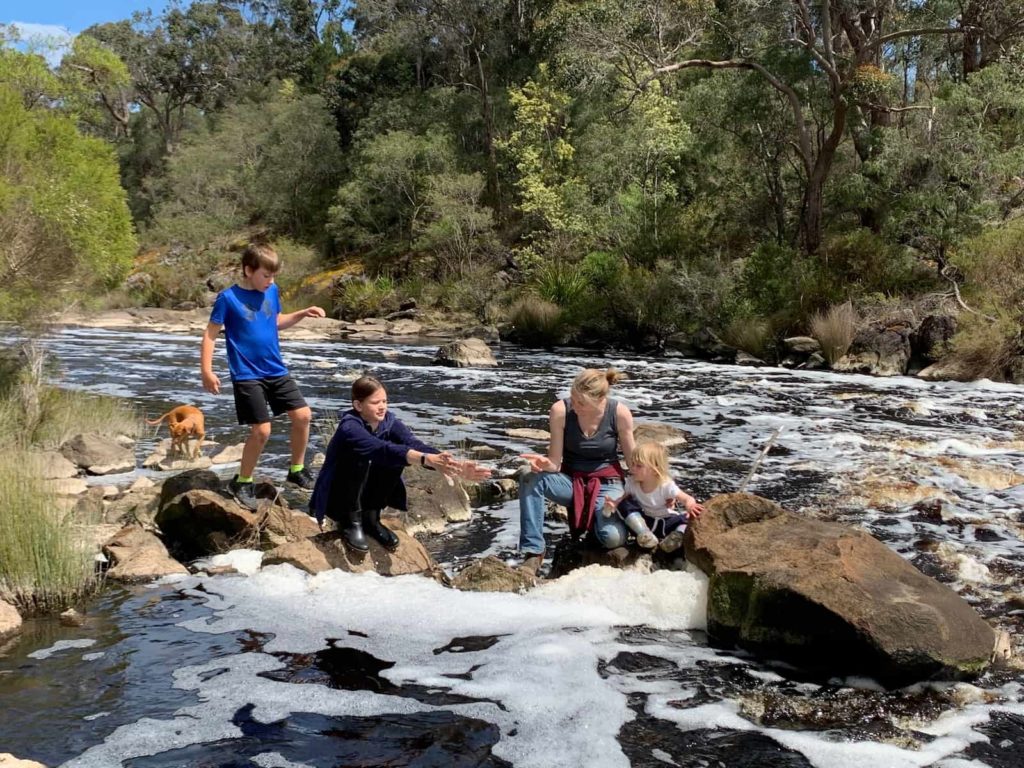
GL: What significance does your chalet business have to you and the local community?
Prue: When Mum and Dad bought the property there was no short-term accommodation in the area apart from the Walpole pub and Tinglewood Lodge, so they saw a gap. Anyone who lived here or travelled through could also see that, but there wasn’t really ‘tourism’ here at that stage. The major visitor attractions of the WOW Wilderness EcoCruises, the Tree Top Walk and the Bibbulmun Track didn’t kick off until later in the 1990s.
Walpole is such a remote place and when Mum and Dad started the business in 1989 there was no internet. They’d get enquiries in the mail from people, and then they’d send back a letter with a brochure.
Our chalets have been here for 35 years now, so it’s been fulfilling for us to have seen thousands of people coming through our accommodation. We’ve provided them with a base to explore the wilderness and we’ve enjoyed sharing our favourite spots.
GL: The Frankland River seems embedded in your life. How important is it to you?
Prue: I’ve seen rivers in other parts of the world – Europe, Africa, America and Asia – and I’ve visited many rivers in the south-west, but this one’s just home. I feel like I belong to this river. I’ve got to look after it like it looks after us.
Sharing the river is important to me and that’s made possible by the easily accessible parts with flat granite rocks – they feel like meeting places for family, friends and visitors.
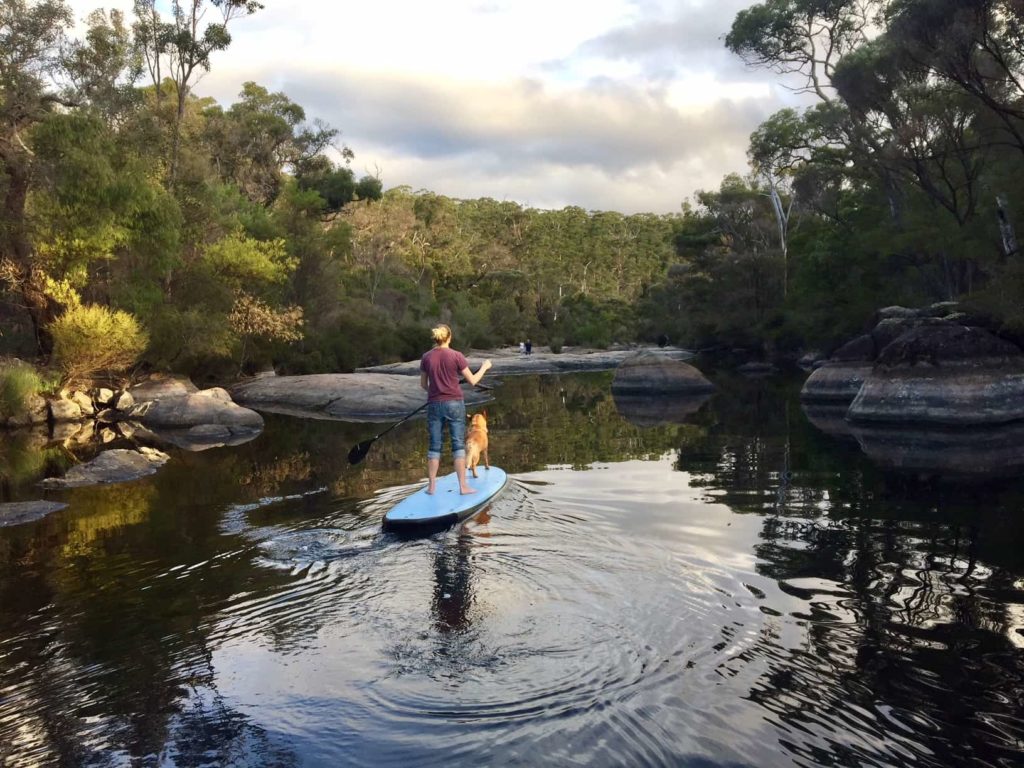
My home is close to the river and throughout my life I’ve spent many wonderful hours rock-hopping and swimming, paddling up and down, exploring, learning about the biodiversity along it and the creatures that live in it. A few months ago, I saw a pouched lamprey, caught from sampling nets on the Deep River north-west of Walpole. It’s made me curious to know whether those bizarre creatures are here in the Frankland.
Every time we explore the river, we find something interesting, like rakali middens, which are eating places left by native water rats. I’ve also got to know some of the individuals that have lived here for as long as I have, if not much, much longer, like our old mama catfish (cobbler) that we sometimes see jumping out of the water. We think she’s the same one that we keep seeing in a similar spot over and over. She’s over a foot long and she’s met three generations of my family, and I’m sure I’ve met more than three generations of her family. It’s nice to feel the familiarity of this river and yet know it still holds so much mystery.
I’ve had so many adventures on the river with my sisters and my friends, packing a picnic and seeing if we could go further than we’ve ever been before – that often means abandoning the canoe on some rocky, impossible spot, and then swimming and going on foot further and further up the reaches of the Frankland, or downstream, and getting thoroughly stuck in impenetrable bush.
I have special memories of going down to the river on most summer evenings for a swim and a wash. When we were younger, there were a lot of leeches in the river, and we used to keep a little jar of salt on the rocks, tucked into the bushes, for when we invariably got leeches. But they’re not so common anymore.
The future of the fringing (riparian) vegetation is a bit of a sore point for me now. My emotions are right at the surface while I’m thinking of its recent changes, because to me, the river seemed unchangeable and steadfast. I knew every shrub and tree like it was family. Then during the late spring of 2023, walking down to swim at our usual spot, we started to notice the shrubs and the trees on the granite areas in particular browning off. And then more and more and more succumbed to the drought, and now there are huge swathes of vegetation along the river that have died.
In my eyes, to lose one tree is horrifying, but we’ve lost hundreds of trees and shrubs. They’re never going to recover in my lifetime, and they possibly won’t recover in my daughter’s lifetime, and she’s just turned six. It’s like losing a branch of my family.
Things are so slow growing on the granites – they’re like bonsais. So, it doesn’t bode well for the future dry years, which we are going to experience. I’ll do my best to keep this stretch a healthy functioning ecosystem while I can and to appreciate and share its beauty with everyone who flows through here.
GL: Did your family have a role in encouraging your passion for nature?
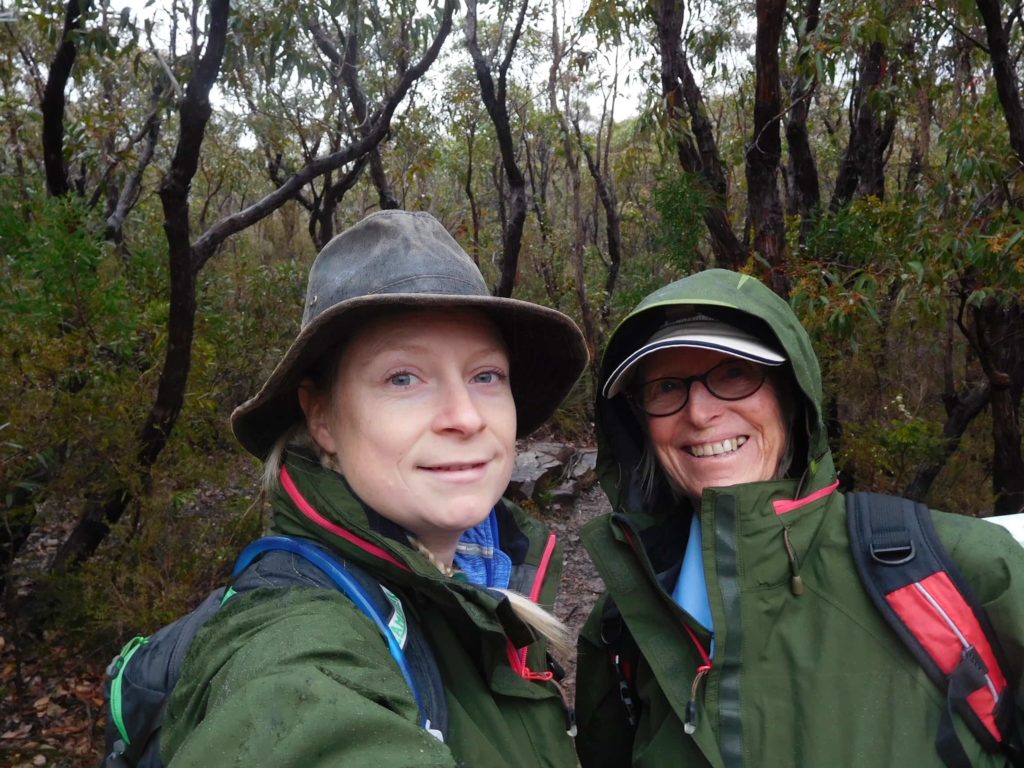
Prue: Oh, a huge amount, especially my mum, Hes. From when I was a toddler, she used to take me on walks with the Walpole-Nornalup National Parks Association. She really encouraged me to learn the names of different plants and animals, and she has a great reverence for the Walpole Wilderness area – it’s something we have in common. We can spend a long time together out in the wilderness.
Last year we went out to the Soho Hills, north-east of Walpole. We had this incredible group of women with an age span of about 40 years between us, and we took a big trek through country, including thick areas of bush, to see the Rate’s tingle trees. We had such a beautiful time. I’ll always have that special memory, and I’ve got photos of some of the extraordinary trees that we saw. I just felt so lucky to be able to go there with Mum.
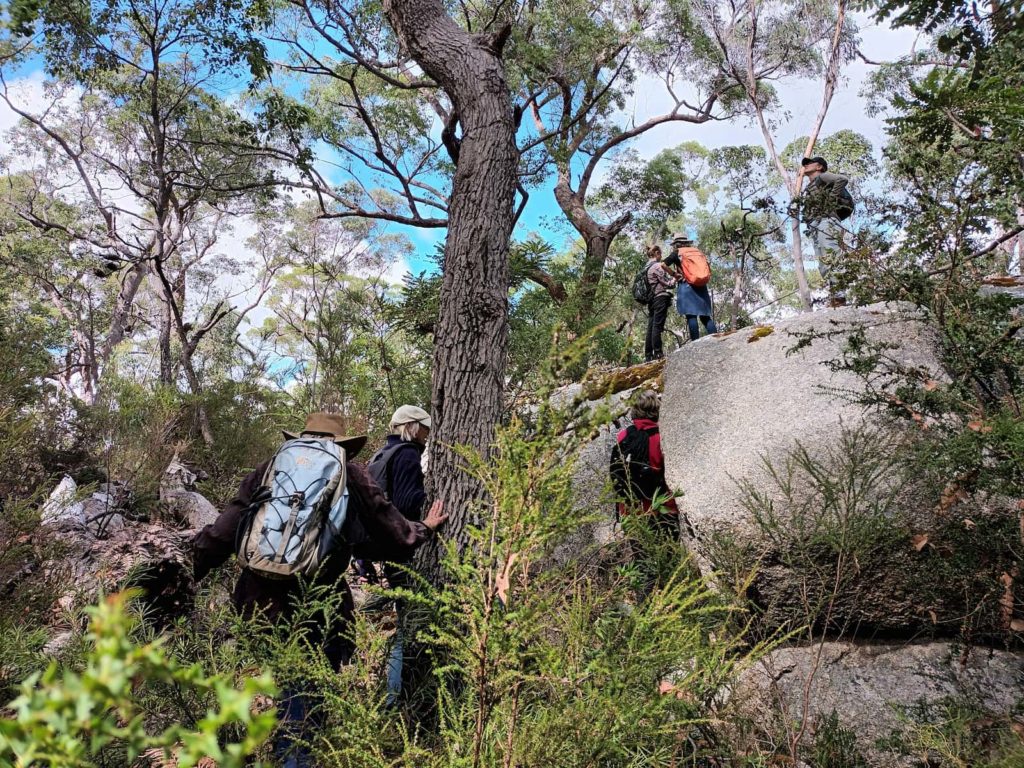
Tragically, in April-May this year, about 15,000 hectares of the area was severely burnt by introduced fire (arson), and most of the mature Rate’s tingle population has been badly impacted.
GL: How have you built your ecological knowledge?
Prue: My childhood was rich with nature so that was a great start! Many of my university lecturers really inspired me. I studied Natural Resource Management at the University of WA, covering all aspects of the natural sciences – ecology and botany were the units I enjoyed the most.
I developed a passion for fungi and I was able to do my final year honours project on the effect of dieback on fungi in the jarrah forest. Fortunately, two of my supervisors were fungal ecologists and I bolstered my learning with fungi-related fieldwork during university holidays.
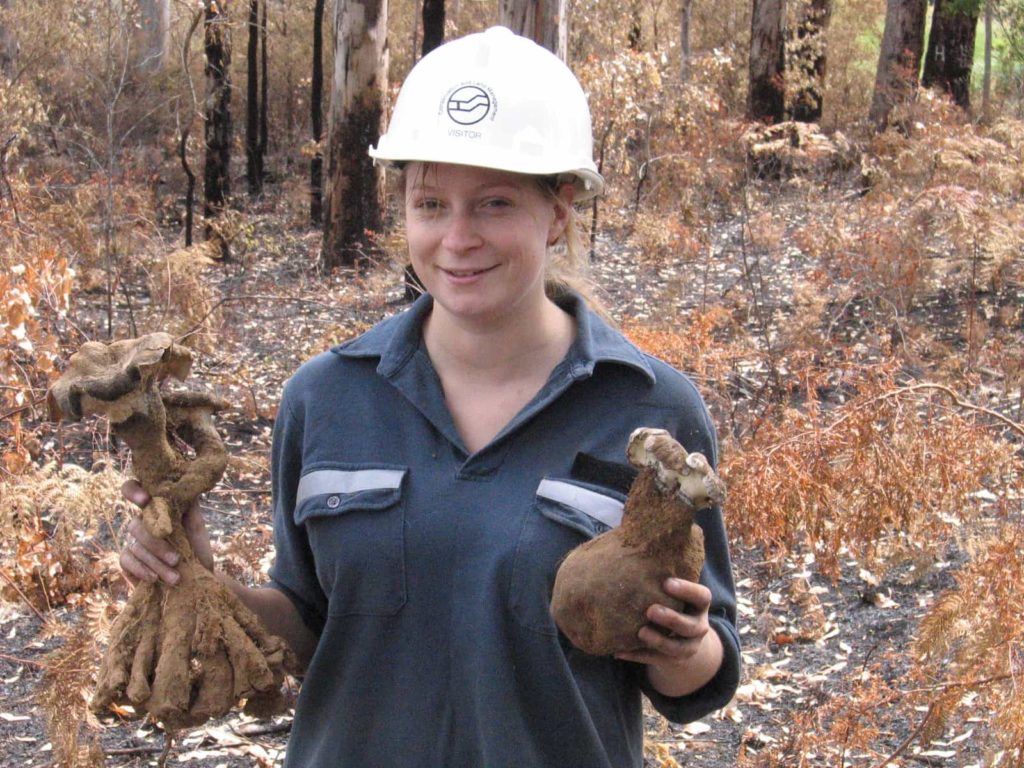
I then worked all over the state, but mostly in the Pilbara and Kimberley as a botanist for around 10 years, which built my knowledge of West Australian flora. Hands-on fauna work and fungi studies were part of that experience too.
I always knew that I would come back to Walpole but experiencing such a diversity of landscapes before I came home broadened my perspective and intensified my love of this place.
I moved back here permanently eight years ago. Getting to know the local community better, as an adult, and seeing the amazing scientific talent that we have down here for wildlife, peatlands and more, is very inspiring. I’m working with and volunteering alongside these people, including Katrina Syme, a fungi expert. I am now in awe of the great diversity of fungi in our forests and enjoy leading groups on fungal forays in the autumn and winter.
Having a background in environmental science is certainly helpful in my new role with the Walpole-Nornalup National Parks Association.
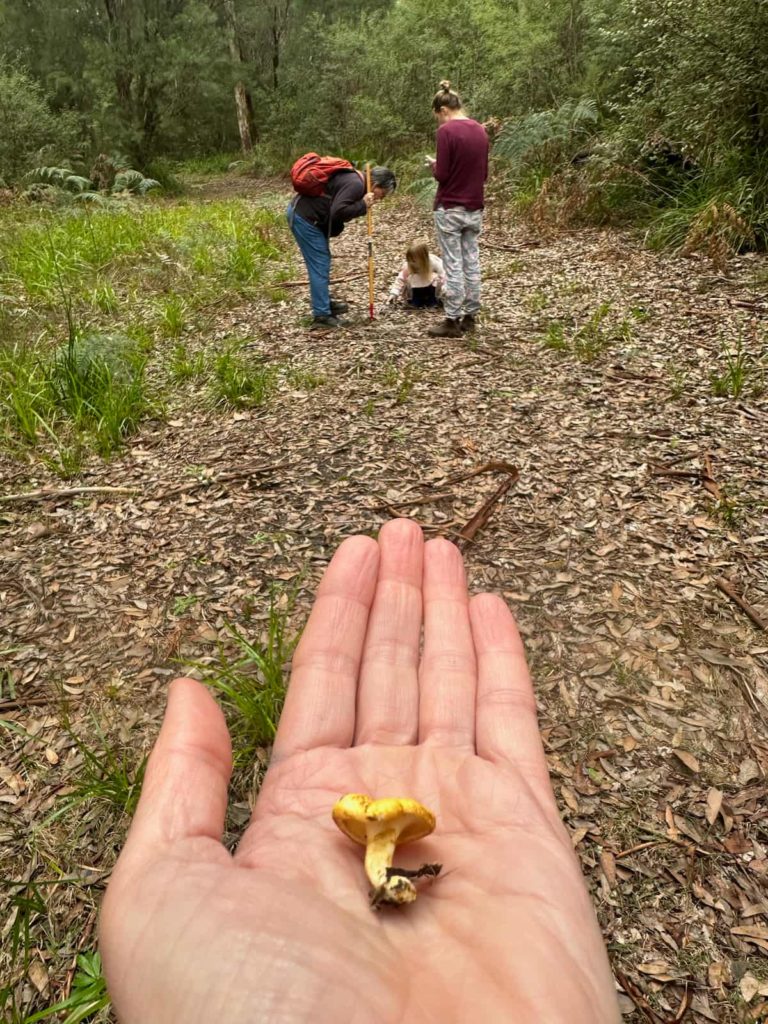
GL: You’ve joined the National Parks Association team – what motivated you and what is your ambition?
Prue: Well, despite the Walpole Wilderness area being so familiar and comforting because of my history here, there’s still so much mystery and diverse landscape to explore. There are not many wilderness areas left in the world, especially not so close to my doorstep, so I have an opportunity to help raise awareness of its value and encourage people to experience it. My other ambition is to increase our knowledge of how best to protect it.

I particularly want to see better ecological and cultural outcomes from prescribed burning practices, and I want improvement in how we manage the area’s peatlands. I’m hopeful positive outcomes will be achieved through a major, collaborative research project that’s underway called Protecting Peatland Ecosystems and Addressing Threats (PEAT), which The Ian Potter Foundation is largely funding.
We’ve always done walks, picnics, social gatherings and talks throughout the National Park Association’s 37-year history. Right now, a lot of our volunteer energy and expertise is going into helping the PEAT project researchers, as well as organising our popular, annual Walpole Wilderness Bioblitz.
We started the Bioblitz surveys to document the wonderful diversity of the Walpole Wilderness and this year we had over two hundred participants including locals, families, scientists and students. Some of the amazing finds were the karri peacock spider, dwarf hammer orchid and over 40 individual quokka records from remote cameras – we’re still buzzing with the event’s success.

GL: What is the future of the Walpole Wilderness area? Can it be preserved?
Prue: Yes, I think it absolutely can, but we have to take our foot off the pedal with the fire management practices that have changed little in 40 years. These practices need updating in light of a rapidly changing climate. I feel this can be done through collaboration and independent scientific research, as well as monitoring and reporting the ecological effects of prescribed burning. I also think fire sensitive areas, such as granite, peat, tingle and red flowering gum, need to be left unburnt whenever possible.
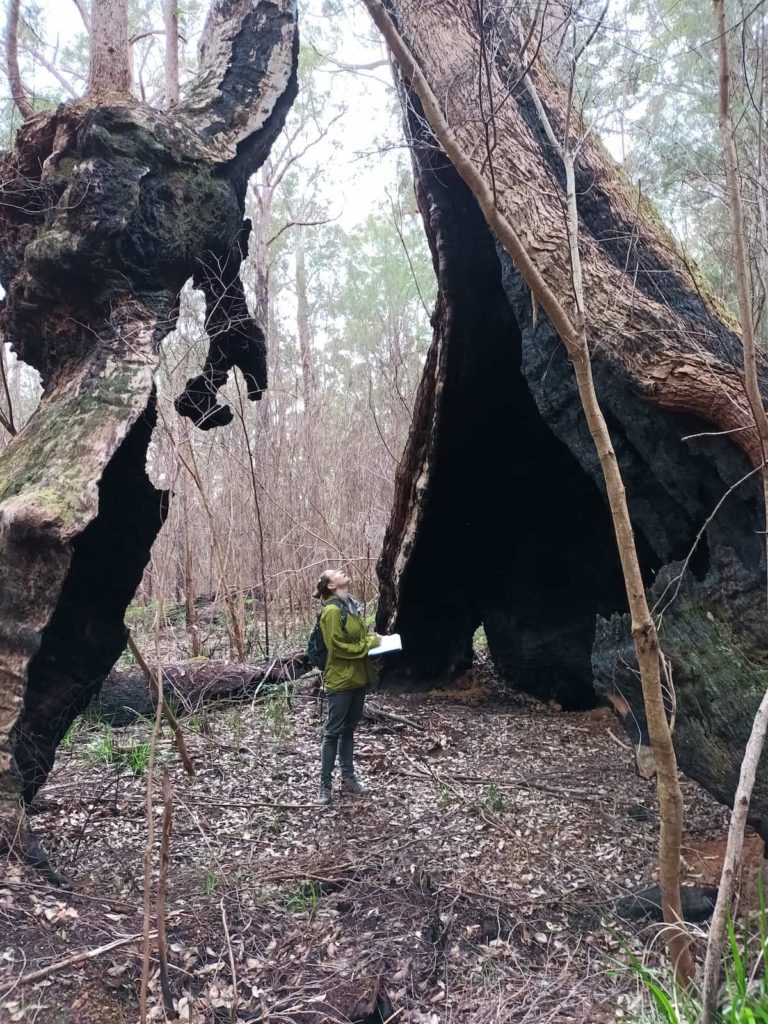
The area does need management, including urgent feral pig control and continuing dieback control. But the main threat that I see is the frequency, the severity, the seasonality and the size of prescribed burns that are still going ahead despite a drying climate – as an example, 2023 was the lowest rainfall year on record for Walpole. The community is recording plant die-off from that drought all through the Walpole Wilderness area.
On a happier note, I think there is increasing local community appreciation of the Walpole Wilderness, and I hope this leads to its natural values truly being sustained. Even though people around Walpole might have very different backgrounds and career paths, we can all appreciate that there’s something unique and wonderfully isolated about this place – it’s like an island.
GL: How familiar are you with Aboriginal cultural connections to the area?
Prue: Zac Webb was living in Walpole when I was growing up and we went to school together. His parents, Uncle Wayne and Aunty Toni Webb, have roots here with the Pibulmun nation. They also speak for the Wadandi nation over on the west coast, where they now live. I understand this Walpole area is a border zone of three Noongar nations: the Murrum people, Pibulmun people and Menang people.
I’ve learned this was always a seasonal place – Aboriginal people avoided this place in winter, so it’s a kind of transition zone for people, which is maybe why there’s the ability for collaboration between different nations here.
This year, the Webb family, together with Undalup Rangers and Aunty Lynette Knapp and others from the Menang nation, were part of the annual gathering of the PEAT project. We discussed direction and getting everyone up to speed on the many different aspects of this complex project. Its focus is the biodiversity, geodiversity (including soils) and cultural significance of peatland ecosystems in the Walpole Wilderness and surrounding areas.
I found hosting the traditional custodians on the banks of the Frankland River inspiring and a great sharing experience. It was interesting to talk with the Webbs and Aunty Lynette about the peat landscapes and areas of tingle forest and how historically they would never introduce fire into such significant areas.
GL: What does being back at Che Sara Sara mean to you?
Prue: It’s such a privilege to be able to share this place and to bring up my daughter here. I love that we can make special memories together (and with friends), like paddling home in the canoe from the school bus stop on a sunny afternoon. I hope my daughter will have many treasured memories like this to connect her strongly to this place.

It feels like I’m the current custodian of a very special area. It’s got some deep history, as well as fresh history for me and my family. Living in this place, surrounded by top-notch friends and community is made all the sweeter by being on the doorstep of the Walpole Wilderness. I can’t picture a more important place – and my connection to it keeps growing.
THANKS to Prue Anderson and the photographers, and to many others for their valuable contributions. Editing by Gondwana Link’s Margaret Robertson and Keith Bradby. This story is also published in the November 2024 edition of the Southerly Magazine.
FURTHER INFORMATION
Read about the Walpole-Nornalup National Parks Association, including published reports of the annual Walpole Wilderness Bioblitz surveys.
Support the conservation of the Walpole Wilderness area, which includes multiple national parks (Walpole-Nornalup, Mt Roe, Mt Frankland, Mt Lindesay and Shannon), by joining the Walpole-Nornalup National Parks Association: WNNPA-Membership-Application-form.pdf
Learn about the 5-year PEAT project taking place in the Walpole Wilderness and surrounding areas: Protecting Peatland Ecosystems and Addressing Threats in Southwestern Australia. This transdisciplinary research project is co-led by the University of Western Australia and Edith Cowan University and guided by local Elders. PEAT is a collaborative effort involving academic and community-based scientists, managers and volunteers.
Related Walpole Wilderness area stories on the Heartland Journeys website:
Dr Joanna Young: Speaking out: Dr Joanna Young challenges prescribed fire practices
Dr Liz Edmonds: Peat, fossils, palaeohistory + art
Professor Pierre Horwitz: Sunset frogs in the cool and wet
